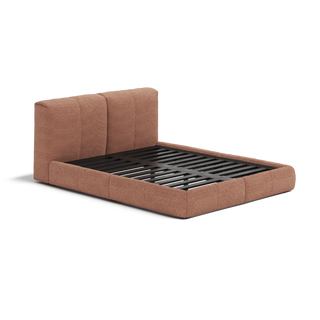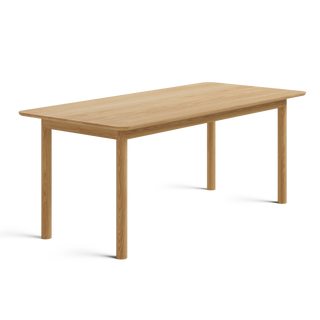We’ve recently come across a huge secret in the furniture industry. And we’re not keeping it to ourselves…
The world of furniture has seen a growing trend in recent years of companies "white labelling" products. It's when a company takes products from a manufacturer, puts their own label on it, and voila! It's now their own product. They brand and sell it as theirs. While this practice may seem harmless, there are several dangers associated with it that you should be aware of.
Lack of transparency
One of the most significant dangers of white labelling is that it can lead to a lack of transparency and accountability. When a company white labels a product, it could leave us in the dark about the products we bring into our homes. Did the company use safe materials? Was it made in a factory with fair working conditions? These are important questions that white labelling can leave unanswered.
This can make it difficult for us consumers to make informed decisions about our furniture. Plus, it might mean we end up supporting unethical business practices without even knowing it.
Innovation no more
Another danger of white labelling is that it can lead to a lack of innovation. Companies who solely rely on white labelling may not be investing in their own research and development to create new, innovative designs. This can lead to a stagnation in the industry, with companies simply copying each other's products rather than creating something truly unique and purposeful.

Eva's products, like the Everyday sofa, are designed here in Australia by the Eva team. Unique, thoughtfully designed and definitely not white-labelled.
Bad day for the budget
Felt ripped off lately? White labelling can also lead to an increase in the price of products. When a company purchases products from a manufacturer, they often have to pay a premium for the right to rebrand them. That cost gets passed on to us, the consumers, and we end up paying more for the same product.
These companies also add a big markup to white-labelled products because they have a renowned brand name. You may be paying more just for the pretty and recognisable logo on the box - when it’s the same generic product from a white label manufacturer. We don’t like to throw around the word “scam” but… well, you can decide for yourself.
Clueless customer service
Finally, white labelling can lead to a lack of customer service and support. When a company white labels a product, they may not have any direct contact with the manufacturer, which can make it difficult for them to provide support or answer any questions about the product. This lack of service can be frustrating when you have issues with the product or simply want more information about it.
Spotting a white labeller
In the wild, it can be tricky to spot a business that’s using white labelled products, so here are some tips to spot a potential:
- Look for branding - If a product lacks a manufacturer's logo or any other distinctive markings, it may be a white label product.
- Check the product description - White label products often have vague or generic product descriptions that don't provide much detail about the product's materials, construction, or design.
- Research the seller - If you have the time, check if the seller specialises in a particular brand or style of furniture. If the seller offers a wide variety of products from many different brands, it may indicate that they are selling white label furniture.
- Inspect the product - If you’re buying in-person, take a close look at the product's quality and materials. Poor quality materials, uneven finishes, and rough edges can indicate that the product is a white label item.
- Ask for more information - If you're unsure whether a product is a white label item, ask the seller for more information about the manufacturer, product specifications, and warranty. A reputable seller should be able to provide this information.
While white labelling may seem like a convenient way for companies to quickly expand their product range, it can have serious negative impacts on the furniture industry and consumers. But if we’re aware of these dangers, we can support companies that invest in their own research and development, have transparent and accountable supply chains, and bring unique designs to the table.
























